Akashi Kaikyo, the world's second longest suspension bridge, connects the island of Awaji with the city of Kobe.
Most people haven't heard of the small island of Awaji. It can be found in the Seto Inland Sea, just between the main island of Honshu and Shikoku - the smallest, least populous, and least visited of Japan's four main islands.
Magnificent Akashi Kaikyo Bridge - The World's Second Longest Suspension Bridge
by Rob Dyer
Akashi dwarfs the Golden Gate Bridge
Connecting Awaji to the mainland of Honshu is the Akashi Kaiyko Bridge - was the longest single span suspension bridge in the world. It held the record for 24 years, until 18th March 2022. That was when the 1915 Çanakkale Bridge with a central span of 2023m opened in Turkey, pipping the Akashi Kaikyo by 32m.
Opened in 1998, at 1,991 metres (6,532 ft; 1.237 mi), Akashi Kaikyo Bridge's central span dwarfs even that of the more famous Golden Gate Bridge in San Francisco in the USA.
What's amazing about this bridge though is not only can you walk along it underneath the main road level, but you can go up to the very top of one of its two main supporting towers - 300 m above the churning Akashi Strait waters.
If you're wondering what it would be like to drive across the bridge and want an introduction on driving in Japan then I recommend reading my post: Driving in Japan Made Easy - A Beginner's Guide.
Akashi Kaikyo Bridge - Facts & Figures
1,991 m (6,532 ft / 1.2 mi)
Longest Span
3,911 m (12,831 ft /2.4 mi)
Total Length
282.8 metres (928 ft)
Height
April 5th 1998
First Opened
Satoshi Kashima
Designer
Awaji Island and Kobe
Connects
Why was the Akashi Kaikyo Bridge built?
The bridge was built to connect the city of Kobe (on the mainland of Honshu) with Awaji Island in the Seto Inland Sea.
Before it was built, ferries used to carry passengers across the Akashi Strait. This dangerous stretch of water often experiences severe storms, and during a storm in 1955 two ferries sank, killing 168 people. This tragedy convinced the Japanese government to develop plans for a bridge to cross the strait.
It had to be designed to resist typhoons of 180mph and earthquakes up to magnitude 8.5 on the Richter scale.
The Great Hanshin Earthquake
The two towers were originally 1,990 m (6,530 ft; 1.24 mi) apart, but the Great Hanshin earthquake in January 1995 moved the towers so much (only the towers had been constructed at the time) that the span had to be increased by 1 m (3.3 ft).
There is no train track on the bridge. It has six lanes of roadway, three in each direction.
Taking the 'Bridge World' tour
To explore the world's second largest single-span suspension bridge, you need to buy a Bridge World package tour organised by the bridge company.
You'll need some form of ID (such as a passport or driver's licence) and you'll need to book in advance as there are only two tours per day, between Thursdays and Sundays. There are no tours from December to March.
Note: Unfortunately, the tour isn't able to accommodate wheelchair users or those who have difficulty walking.
A safety briefing
When you arrive you are taken inside the Akashi Kaikyo Bridge Exhibition Centre at the foot of the Kobe side of the bridge.
First, you're taken through to a room, a little like a classroom, where you are shown a short PR film introducing the bridge, followed by a safety briefing.
It's all in Japanese but the gist of the main points are fairly obvious.
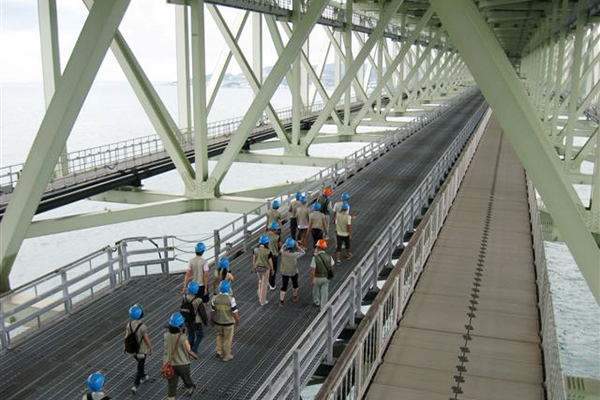
Walking beneath the roadway is a special experience
A waiver form and safety helmet
As part of this briefing, you have to sign a waiver form saying that you recognise that this is dangerous and you might die in the process ;-).
Only kidding!
You probably won't actually die, but you do need to sign a waiver form. Everyone is then given a safety helmet that must be worn at all times during the trip.
After a brief look around the Exhibition Centre, where you are reassured by details of the impressive construction, they take you outside and onto the bridge.
Access is via some steps you need to walk down, taking you to the maintenance platform. This is a pathway running the entire span of the bridge, in parallel below the main level carrying the road traffic.
Catching an elevator to the 98th floor
The deck of the platform is a weave of steel joists rather than being solid - making it see-through. You can look down and see ships passing underneath the bridge below.
There are two suspension towers carrying the weight of the span and when you get to the first one, you enter a small elevator inside the tower itself.
It takes about two minutes to go up to the 98th floor. I'm not sure what's on the other 97 floors. ;-).
At the top, you exit still inside the tower, then there is a small stairway to climb up the final few metres, and through a sliding steel doorway that opens out onto the cross bar platform at the top – almost 300 metres up!
The photo above was taken when my wife and I did the trip. There we are in the centre at the back, in our fetching (but protective and very welcome) blue helmets.
Spectacular and breathtaking views
In the photo, behind us in background you can see Awaji Island to the south, and to the left of the photographer (out of shot) is Kobe on the main island of Honshu and the Exhibition Centre where you get your briefing.
If you look closely, you can see there is a sign stating that it is 289 metres high. So, it's pretty high. As you might expect, there are some spectacular and breathtaking views.
You can't hang around up here for very long, although they do allow you to wander and take your own photos.
A commemorative photo
Your guide will also take a commemorative shot with the date of your visit (using the Japanese calendar dating system) – a printed copy of which you receive at the end of the trip as part of your visitors package.
Once you head back down, you are encouraged to have a look around (and hopefully spend a bit more money) in the visitors centre. This is situated on the bridge, below the road above it is actually quite a nice place to stop and rest for a while.
There is a café here where you can get light food and drinks and the inevitable gift shop.
Wataru: Akashi Kaikyo's official mascot
Like virtually everywhere in Japan, the Akashi Kaikyo bridge has its own, official mascot called Wataru. Who is a yellow dude, shaped like a cross-section of the bridge with a small red car driving over the top of its head!
You can pick up numerous gifts featuring Wataru. I'm pleased to say we managed to come away with just a keyring. 😉
Before you finish the tour, you return to the briefing room where you started, to hand back your helmets. A nice, unexpected, touch was everyone is given a small commemorative gift pack.
The Bridge World tour package and prices
The tour includes a printed copy of the official photograph that was taken at the top of the tower (ours is the one reproduced above), a certificate of completion of the tour, a DVD about the design, construction an maintenance of the bridge, along with several promotional, glossy factsheets about the bridge (all of which is in Japanese) in a commemorative folder.
Current prices are ¥3,100 per adult and ¥1,500 per child (aged 13-15). No one younger is permitted because of safety issues.
Although the Akashi Kaikyo Bridge itself is reasonably well-known and well worth a visit, not many people are aware of the Bridge World tour you can take.
If you're thinking of going to the bridge, I'd thoroughly recommend taking the Bridge World tour as part of your trip. It's an unusual and unforgettable way to spend a few hours.
Have you been on the Bridge World tour? Or something similar on another bridge? I'd love to hear from you! Share your experiences by leaving a comment below.
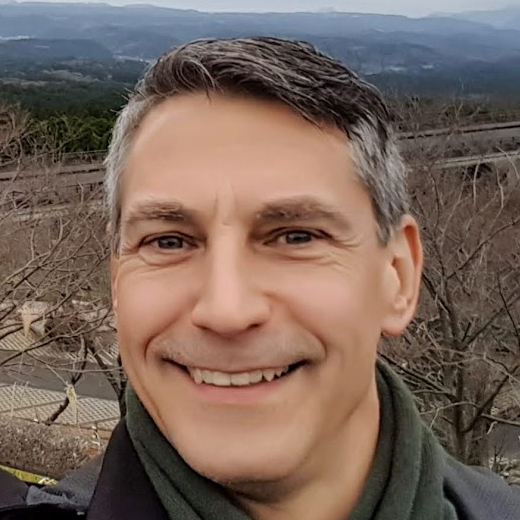
About the Author
A writer and publisher from England, Rob has been exploring Japan’s 6,800 islands since 2000. He specialises in travelling off the beaten track, whether on remote atolls or in the hidden streets of major cities. He’s the founder of TheRealJapan.com.
Resources
Location Map
Address - Akashi Kaikyo Bridge & Exhibition Centre
4-114 Higashimaikochō, Tarumi-ku, 神戸市垂水区 Hyōgo-ken 655-0047, Japan
Akashi Kaikyo Bridge - Bridge World website
http://www.jb-honshi.co.jp/english/bridgeworld/index.html
Akashi Kaikyo Bridge Exhibition Centre website (Japanese only)
http://www.hashinokagakukan.jp/
Further Related Guides
Discover Shikoku – Island Guide
12 Must-Try Outdoor Activities In Japan
Japan Architecture Tours An Insider’s Review 7 Wabunka Experiences

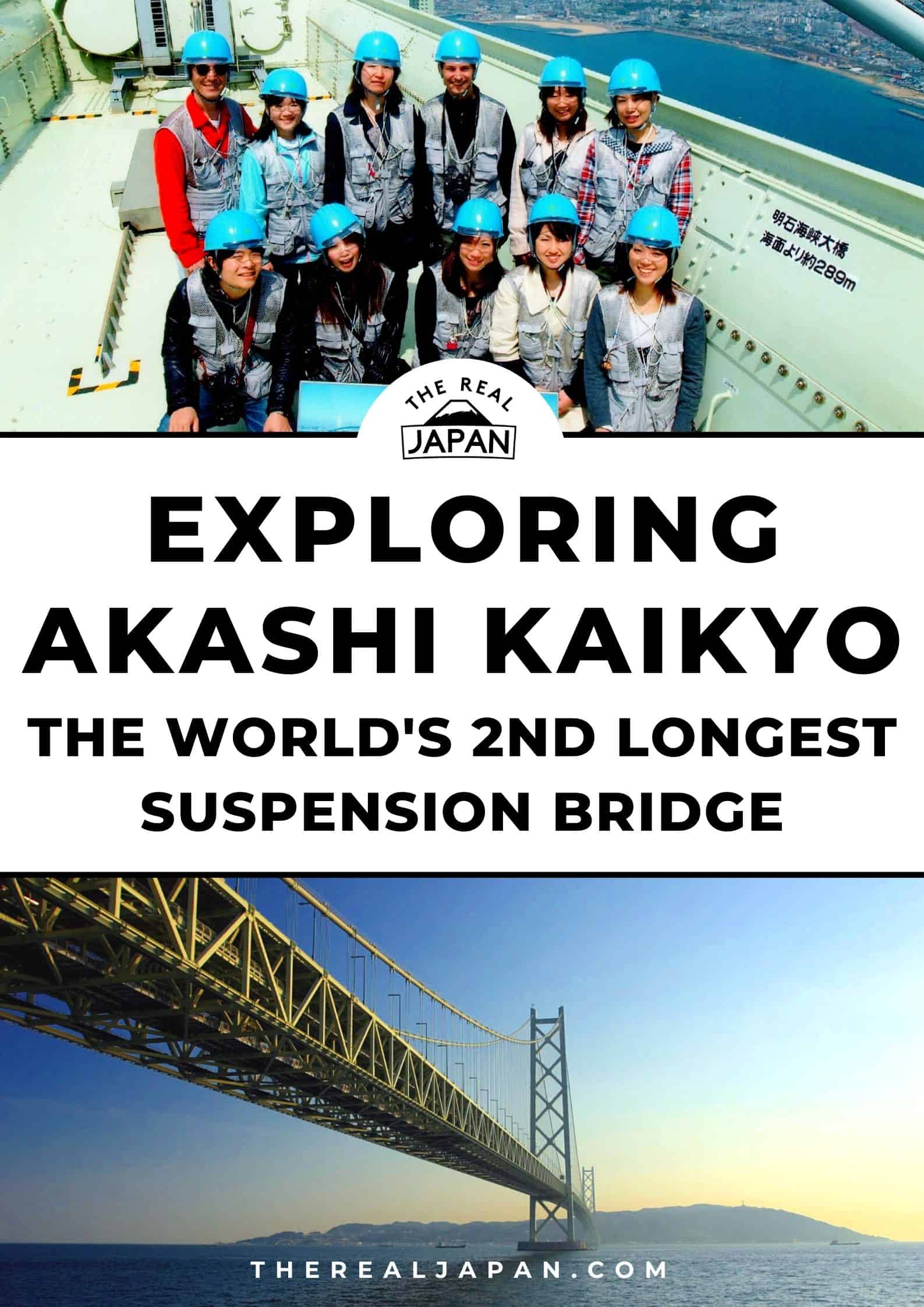
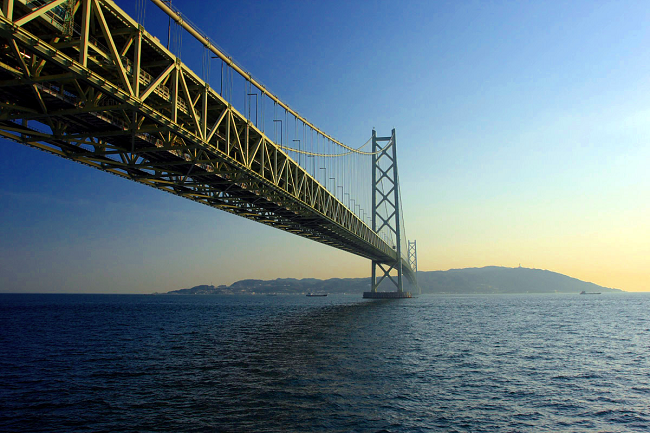

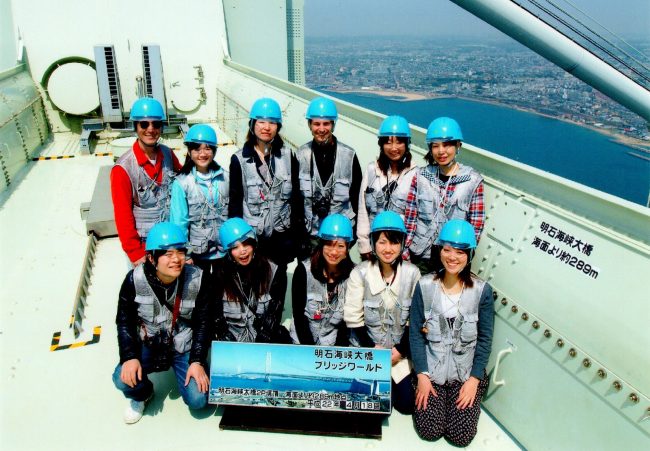
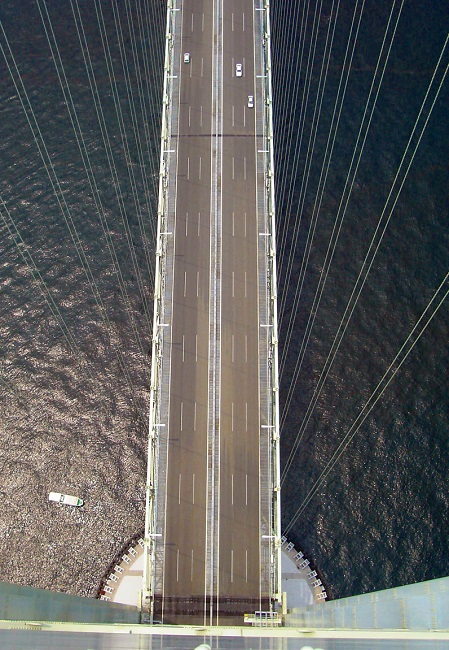
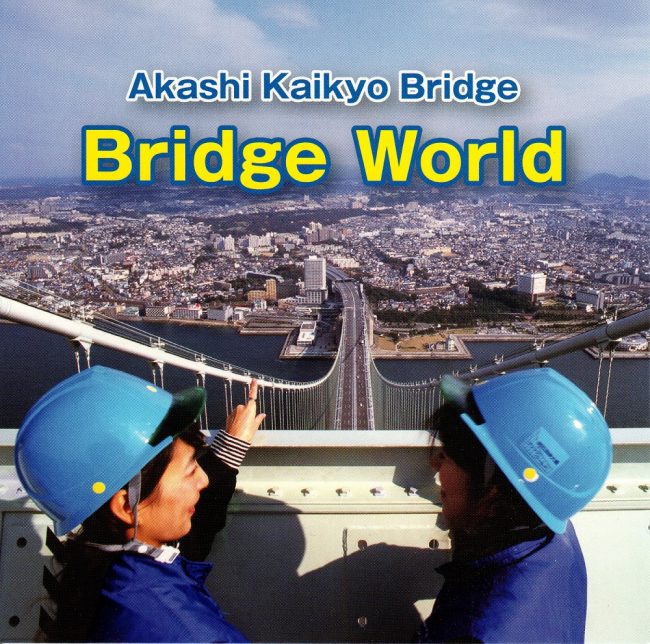
How much does the tour cost?
Currently tickets cost 5,000 JPY Adult (persons aged 16+) and 2,500 JPY Child (13-15 years old).
You can find out more and make bookings on the official website here: https://www.jb-honshi.co.jp/english/bridgeworld/scheduled.html
I’ve watched a mini documentary regarding the Akashi Kaikyo suspension bridge last year. It’s quite an engineering feat, how deep they dug for the anchors. Being ‘Made in Japan’, it’s astonishing how it’s able to withstand earthquakes even when it was still being constructed. The documentary showed footage of the development team running simulations to test for the structural integrity of the bridge in times of earthquakes and typhoons. They mentioned doing Finite Element Analysis if I recall correctly.
The more I write, the more I remember from that mini-documentary mentioned earlier:) In addition, it got me interested with suspension bridges as I was curious to find out the purpose of those hanging cables. Anyways moving to the architecture and design, it looks great at night. As many other japanese cityscapes which illuminates a distinctive aura at night.
Thanks for sharing your thoughts Jose.
Not sure if I’ve seen the same one but did watch a documentary about Akashi Kaikyo on TV in the UK some years ago.
Yeah, the construction footage was impressive.
I haven’t visited for a while (to stop and look around) but do remember seeing it lit up at night, sometimes from the train when passing by.
There are some terrific views of the bridge from Gohikizuka Kofun on the outskirts of Kobe. There’s a video of the views in this post, which you might also enjoy…
https://www.therealjapan.com/goshikizuka-mounded-tomb-kobe/